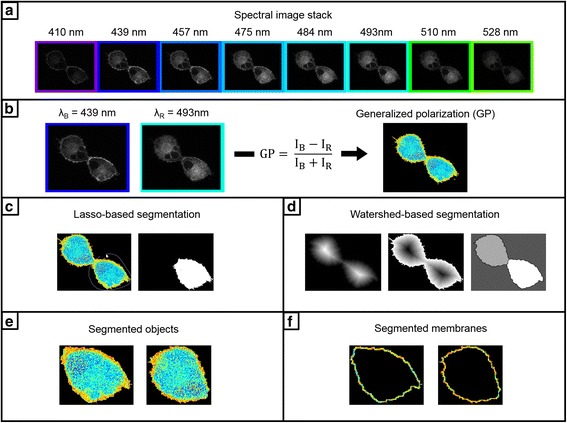Fig. 1.

The Spectral Imaging Toolbox. a An auto-thresholded spectral image stack containing images of C-Laurdan fluorescence emission from labelled A-549 cells collected at wavelengths ranging from 410 to 528 nm. b Generalized polarization (GP) is then calculated at each pixel using the intensities (IB and IR) from the images collected at λB and λR (left) using the equation (center). Pseudocolored GP maps can then be generated (right, color bar same as Fig. 2). Segmentation can then performed on the GP maps using lasso-based segmentation (c), where the user draws a region-of-interest (ROI) (left) used to generate a segmentation mask (right). Segmentation can alternately be performed using a watershed-based approach (d). From left to right in (d), the distance transform, the negated distance transform, and the labelled components following the watershed transform. Either segmentation routine will result in the segmented objects (e), from which a given number of border pixels are taken as the segmented membranes (f)
